The ASRock X570S PG Riptide Motherboard Review: A Wave of PCIe 4.0 Support on A Budget
by Gavin Bonshor on October 22, 2021 9:00 AM ESTVisual Inspection
The ASRock X570S PG Riptide uses a more neutral color scheme with black and silver throughout, including the rear panel cover, the M.2 heatsink, and the chipset heatsink. Built into the passively cooled chipset heatsink is an illuminated PG (Phantom Gaming) logo, which can be customized via the ASRock Polychrome RGB software. Users looking to add extra RGB can do so via two addressable RGB and two regular RGB headers.
For cooling, ASRock includes seven 4-pin headers in total, with one designated as a CPU fan, one for an optional CPU fan and water pump, and five for chassis fans and water pumps. Other notable headers include a 5-pin Thunderbolt AIC card header, a front panel USB 3.2 G2 Type-C header, two USB 2.0 headers (four ports), and two USB 3.2 G1 Type-A headers (four ports).
Dominating the lower section of the board is plenty of PCIe real estate for a budget board. This includes three full-length PCIe 4.0 slots that can operate at x16/x4/x2, with three smaller PCIe 4.0 x1 slots. For storage, ASRock has one PCIe 4.0 x4 M.2 slot, one PCIe 4.0 x4 with SATA support, and six SATA ports with support for AMD RAID 0, 1, and 10 arrays. The top-mounted PCIe 4.0 x4 slot includes an M.2 heatsink, while the second slot does not. ASRock also has its patent-pending graphics cardholder, which helps reduce sag from heavy graphics cards.
In the top right-hand corner of the board are four memory slots with support for up to 128 GB. In terms of speed, the PG Riptide supports memory with speeds of up to DDR4-5000 out of the box when used with a Ryzen 5000 series processor.
Looking at the power delivery on the X570S PG Riptide, ASRock is advertising a 10-phase design. Dissecting it, the power delivery is controlled by a UPI UP9595S PWM controller operating in a 4+2 configuration. ASRock includes eight Vishay SIC654 50 A power stages with dual UPI UP1911R smart PWM doublers for the CPU section, making it a doubled 4-phase design from a technical standpoint. On the SoC section, ASRock is using two independently operated Vishay SiC654 50 A power stages. It's not as over-engineered as some power deliveries, but for the price point, it's more than enough to operate Ryzen 5000 without issues.
ASRock is using a simple power delivery heatsink which doubles up as the board's rear panel cover. The design is more about catching passive airflow over high levels of mass, which means it should handle an overclocked processor as this is the only section of the VRM the heatsink covers. The SoC section of the power delivery is solely reliant on passive airflow directly over the bare power stages.
Focusing on the audio section of the board's components, ASRock uses a Realtek ALC897 HD audio codec, which is aging, yet still entirely acceptable for an entry-level model today. Assisting the HD audio codec are four Japanese gold Nichicon audio capacitors, with a front panel header available for users to use. There is also a small line of separation between the audio PCB and the rest of the board.
The rear panel of the ASRock X570S PG Riptide is one USB 3.2 G2 Type-C, one USB 3.2 G2 Type-A, four USB 3.2 G1 Type-A, and two USB 2.0 ports. Also present is a PS/2 combo port for legacy peripherals, five 3.5 mm audio jacks, and S/PDIF optical output powered by a Realtek ALC897 HD audio codec, as well as a single HDMI 2.1 video output for users looking to utilize AMD's Ryzen APUs. ASRock includes a blanking plate for the installation of an M.2 Key E Wi-Fi adapter, while a small BIOS Flashback button finishes off a modest rear panel.
What's in The Box
The main bulk of the accessories within the ASRock X570S PG Riptide box include a pair of SATA cables, ASRock's graphics card holder, three M.2 screws, and one M.2 standoff. There is also a quick installation guide, a software and drivers installation disc, and a rear I/O shield.
- Quick installation guide
- Software/Driver installation disc
- 2 x SATA cables
- 3 x M.2 installation screws
- 1 x M.2 standoff
- ASRock Graphics Card Holder
- 2 x Velcro cable ties
- Rear I/O shield
- ASRock case badge



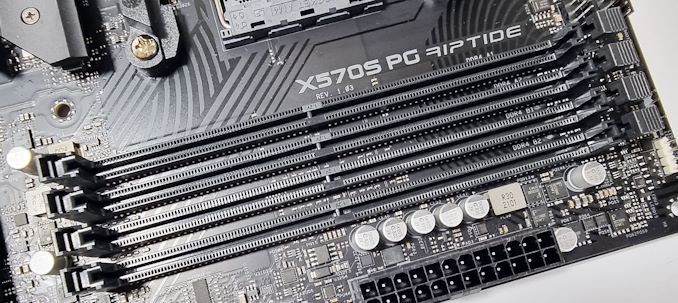
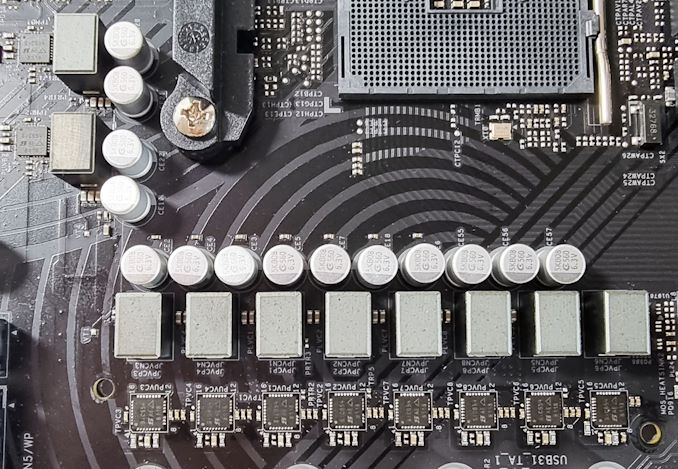
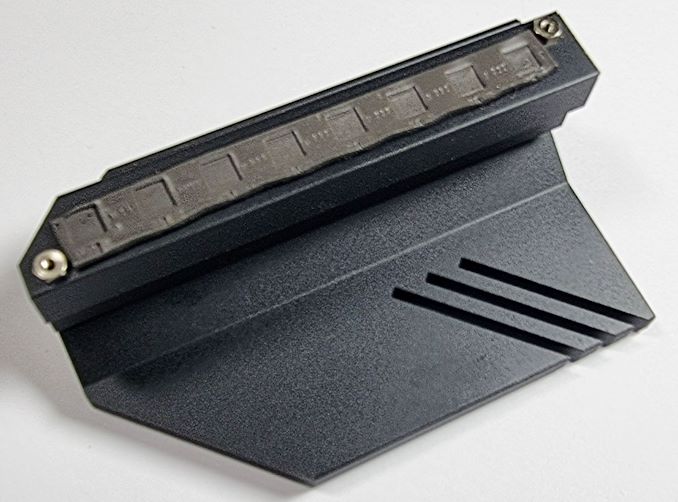
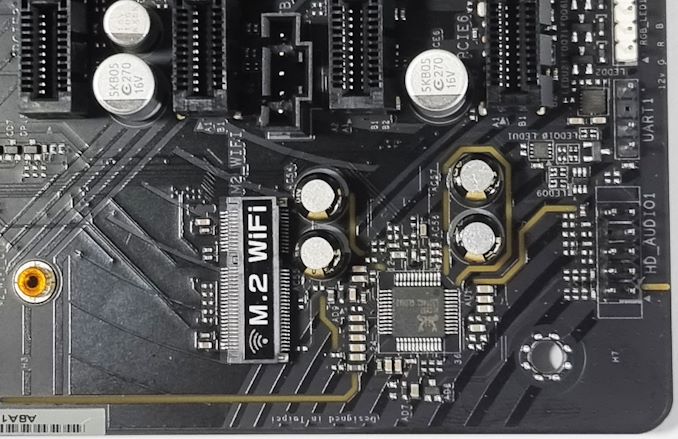

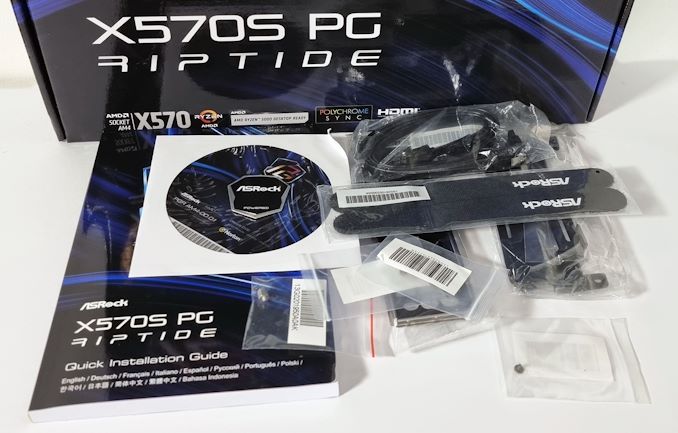








39 Comments
View All Comments
Threska - Sunday, October 24, 2021 - link
Nothing says "canary" as a precursor to the fall of society as the decline of social skills. Soon we all will be communicating in the language of "road-rage".Spunjji - Monday, October 25, 2021 - link
I certainly think education on critical thinking would be of use, but I'm not so sure about fallacies specifically - your example is instructive here, as when lawyers use fallacies, they tend to do so in full knowledge of what they're doing. The target audience are likely to assess the information according to their priors - knowing that they've been presented with a fallacy is unlikely to sway them if they happen to agree with the conclusion.We saw this recently in the UK with a court decision (now overturned) that barred prescribing puberty blockers to trans children on the basis of an assumption that correlation entails causality; whenever this was pointed out people tended to respond by insisting that it was still the right decision for some other (usually unproven or false) reason.
Education on critical thinking is sorely lacking. I didn't get a grounding in subjects like formal logic and epistemology until I studied Philosophy as an undergraduate (I'm in the UK and was educated in a state school, for context).
Oxford Guy - Friday, October 29, 2021 - link
Enough education on fallacies would, hopefully, get them removed from serious discourse. The audience of lawyers is not only the highly-educated. Also, even those with advanced degrees are often only given cursory training in fallacies. The cram-then-forget style of so much of higher education is part of the problem. There is also pressure on all people in a society dominated by fallacies to cave.‘Critical thinking’ should also be reframed as ‘true thinking’ or similar — to remove the false implication that ‘critical’ thinking is special (therefore optional/compartmentalized) rather than the only kind of thinking that yields accurate understanding.
Another massive problem is bad terminology, terminology that so often enables people to avoid the rigor of rationality. When people hear of ‘critical thinking’ they are inclined to believe it’s an academic exercise rather than the way thinking should be approach generally. The embedded word critic also implies combativeness, an excessively-judgmental mentality. Given the strong appeal of conformity (i.e. being ‘chill’), such connotations are counterproductive.
opinali - Saturday, October 23, 2021 - link
The problem with this idea is the economics. If we make the Cartesian product of all CPU models even within a class, all motherboard models, RAM and SSD capacities, plus other variants that exist already (high-end Ethernet or not etc.), that's a truckload of possible SKUs. Unless you pick a one size fits all choice.TheinsanegamerN - Saturday, October 23, 2021 - link
I've got a better idea, what if we made a stqandard that would allow people to put in what they want/need at a price they are comfortable with? Oh hey, we already have that!If you want non upgradeable e-waste, and putting a CPU in a mobo is that hard for you, apple is already available for you. What would soldering everything even gain for you, outside of making everything permanent?
Oxford Guy - Saturday, October 23, 2021 - link
What has been needed for many many years is a change from the ATX form factor to one that cools GPUs efficiently.It has long been utterly ridiculous that the highest-power item in a machine spews its heat back into the case and has tiny fans to cool it.
Threska - Sunday, October 24, 2021 - link
There's change out there. Just not in the market most play in.https://youtu.be/chNM_nntwKU
Spunjji - Monday, October 25, 2021 - link
Yeah, this situation is bizarre. We're long overdue for a substantial change to system form-factor.Calin - Monday, October 25, 2021 - link
Intel introduced BTX 20 or so years ago.There is the ITX, miniITX, MicroATX, all the "small form factors", Intel's "Next Unit of Computing" (NUC), and so on and so forth.
I remember BTX being intended to support better cooling - but for that you have the cases with rotated mainboard, ports on top, multiple chambers (PSU separated from the rest), ...
Not to mention the fact that laptops are taking over desktops (with multiple form factors, from 13" and under laptops to 17.3" gaming rigs or engineering workhorses)...
A system form factor change is taking place...
Oxford Guy - Friday, October 29, 2021 - link
I was aware of BTX but don’t recall that it was mainly about getting GPU waste heat under better control. Perhaps it was. It has been a long time. AMD, Silverstone, Apple have also introduced other form factors. Regardless, the ATX form factor has remained dominant for far far too long.